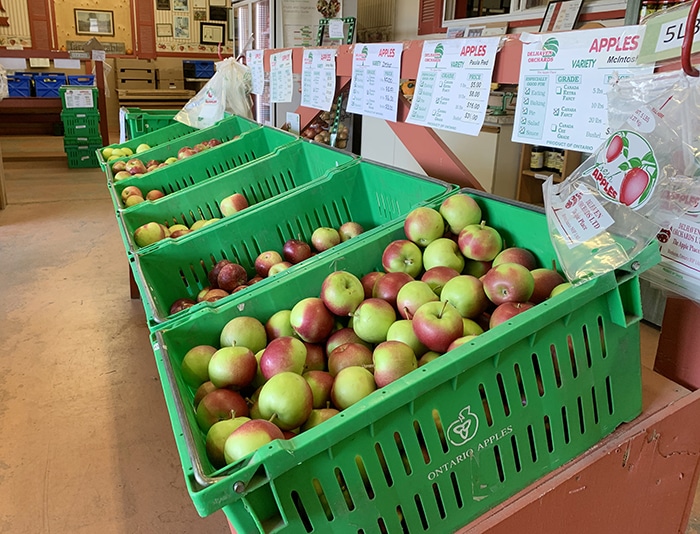
By Chris White/Special to The Voice
With Labour Day behind us and Thanksgiving fast approaching, my mind has turned to thoughts of fall.
The fruit that says fall to me is apples.
Here is some info on apples.
Historically, apples originated in central Asia and their wild ancestors can still be found there.
Biological apples are the fruit of the deciduous tree Malus domestica.
Apples are part of the rose family.
There are more than 7,000 varieties of apples grown in the world, although not all are produced commercially.
Apples do not breed true from seed, which means if you were to save an apple seed and plant it, it would not produce the same variety from which it came. Commercial apple production is based on grafting the cultivar we want to eat on to a rootstock.
Different types of apples are used for different end uses. An apple that is best for cider is not usually the best for fresh eating.
Apples are self-incompatible; they must cross-pollinate to develop fruit.
An average apple tree will produce 20 bushels of apples A bushel of apples weighs about 42 pounds.
It takes two pounds of apples to make a pie, four apples to make a glass of apple juice and 36 apples to create one gallon of apple cider.
Nutritionally, apples are free of fat, sodium and cholesterol. They are approximately 80 calories and have five grams of fibre but if you peel your apple, you lose most of the fibre.
The only apples native to North America are crab apples.
In Ontario, there are more than 15,000 acres of apples in over 15 varieties. The top five varieties in Ontario are McIntosh, Gala, Honeycrisp, Red Delicious, and Empire.
Total world production of apples is approximately 83 million metric tonnes, and half of this is produced in China.
The apple genome has 57,000 genes, which is more than any plant studied so far and more than the human genome (which was approximately 30,000 genes).
Some of the many ways to eat apples include apple pie, apple crisp, apple cake, apple sauce (which you can also use to make apple sauce cake), apple butter, apple jelly, candy apples and caramel apples.
Apples can also come in drink form: apple juice, apple cider (both non-alcoholic and alcoholic called hard cider).
Our local apple producers have many varieties and many delicious apple products for you to enjoy. Make sure you get some, and remember “an apple a day keeps the doctor away.”
- Chris White lives in former Harwich Township next door to where he grew up. He has been employed in agri-business for 20 years. He is passionate about food and rural communities and agriculture. He can be reached at [email protected]






